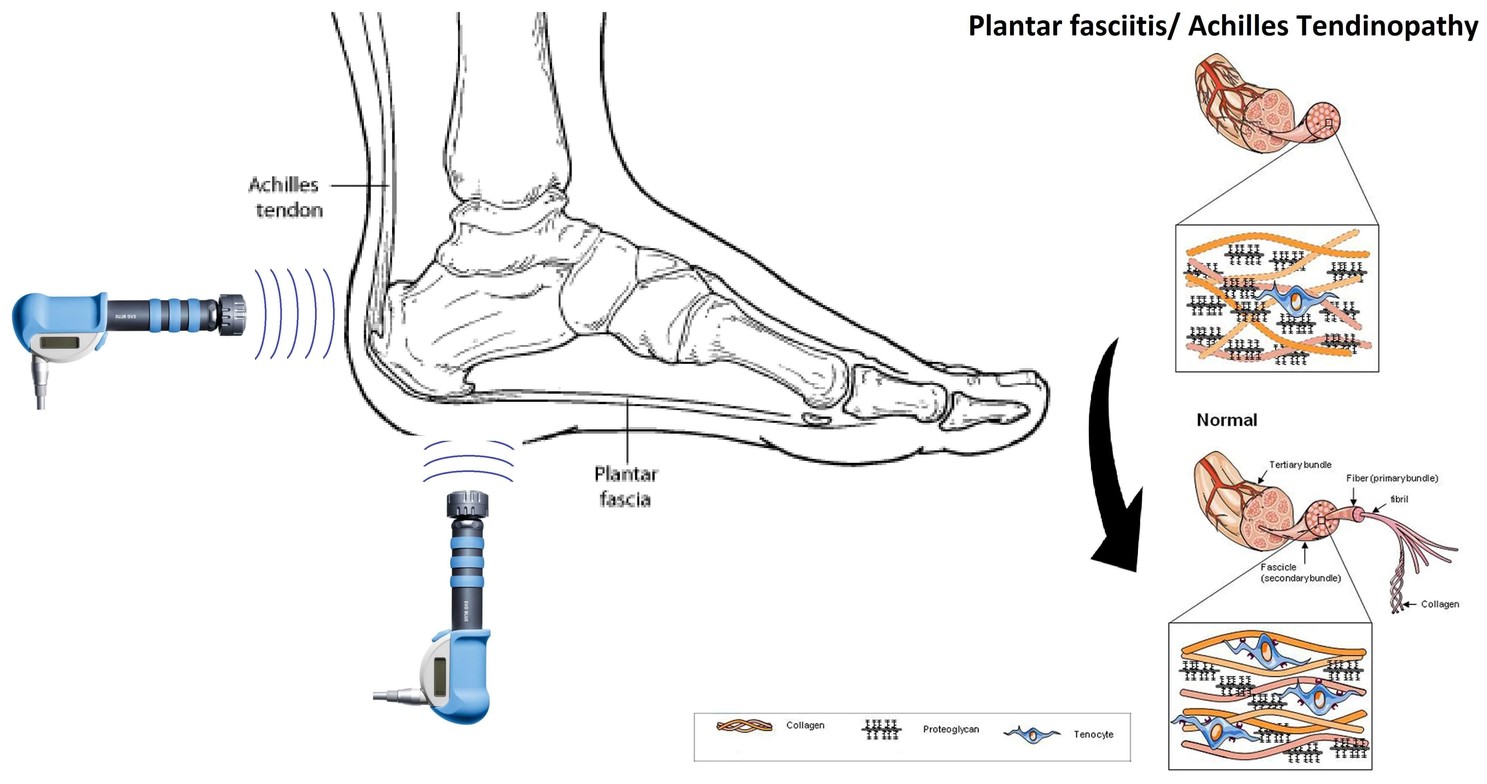
Running is one of the most popular forms of exercise—it's simple, effective, and great for both physical and mental health. But with repetitive motion and impact, running also comes with its fair share of injury risks. At Strength & Spine Chiropractic, we see a wide range of running-related injuries, and one tool we've found to be a game-changer in recovery is Shockwave Therapy.
Let’s break down the most common running injuries—and how shockwave therapy helps you recover better and faster.
1. Plantar Fasciitis
This is arguably the most common issue among runners. The plantar fascia is a thick band of tissue under the foot that becomes irritated from overuse, poor footwear, or improper mechanics.
How Shockwave Helps:
Shockwave therapy stimulates blood flow and breaks up scar tissue in the plantar fascia. It also helps reduce pain by desensitizing nerve endings and jumpstarting the healing process where inflammation has stagnated.
2. Achilles Tendinopathy
The Achilles tendon takes on a lot of load during running. Over time, this can lead to degeneration or microtears, especially in runners who ramp up mileage too quickly.
How Shockwave Helps:
It promotes tissue regeneration in the tendon, increases collagen production, and breaks up calcifications or adhesions. Runners often notice improved flexibility and reduced pain within just a few sessions.
3. Shin Splints (Medial Tibial Stress Syndrome)
Pain along the shin is a common complaint, especially in newer runners or those who increase intensity too quickly. It’s caused by inflammation of muscles and connective tissue along the tibia.
How Shockwave Helps:
Shockwave therapy targets deep inflammation and improves circulation to the area, helping repair small muscle tears and reduce tightness. It’s a non-invasive solution that can complement manual therapy and strengthening.
4. IT Band Syndrome
The iliotibial (IT) band runs along the outside of the thigh and can become tight or inflamed, leading to sharp lateral knee pain.
How Shockwave Helps:
By targeting the IT band and surrounding muscle attachments (glutes, TFL, quads), shockwave therapy can reduce tension and promote healing. It also breaks down adhesions in the fascia that contribute to restriction and pain.
5. Patellar Tendinitis (Runner’s Knee)
Overuse of the quadriceps can strain the patellar tendon, leading to pain below the kneecap. This is especially common in hill runners or sprinters.
How Shockwave Helps:
It accelerates tendon remodeling, enhances circulation, and alleviates chronic pain. Shockwave therapy allows runners to continue rehab without relying solely on rest and anti-inflammatories. Shockwave uses a physical wave of force that produces micro-trauma to the targeted area, causing the body to initiate its natural healing processes. In addition, it aids in the body's natural production of stem cells, which is why it is commonly used after PRP injections.
Why Runners Love Shockwave Therapy
-
Non-invasive and drug-free
-
Quick treatment sessions (5–10 minutes)
-
Minimal downtime
-
Targets the root of the problem, not just the symptoms
-
Accelerates healing when other modalities plateau
Is Shockwave Right for You?
At Strength & Spine Chiropractic, we combine shockwave therapy with chiropractic care, corrective exercises, and personalized rehab plans. If you’re dealing with a running injury that just won’t go away—or keeps coming back—shockwave therapy might be the missing piece to your recovery puzzle.
Let’s get you back on the road, pain-free and stronger than ever.
Serving runners in Tampa and Pinellas Park
Call or book online today to see if shockwave therapy is right for you!
